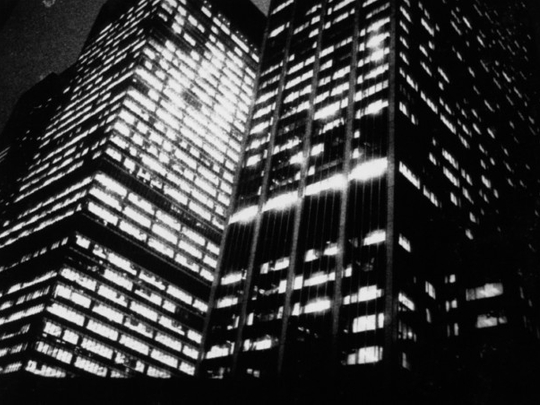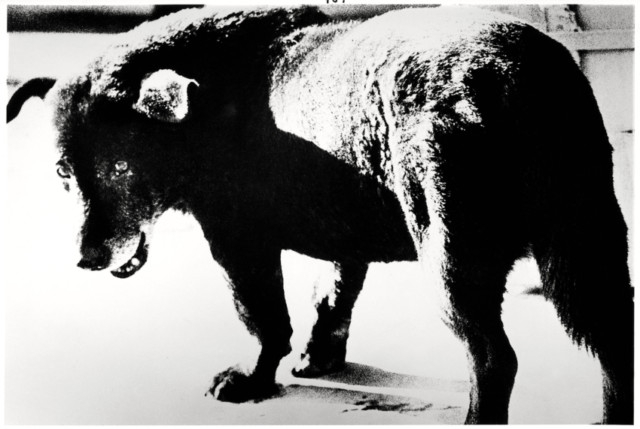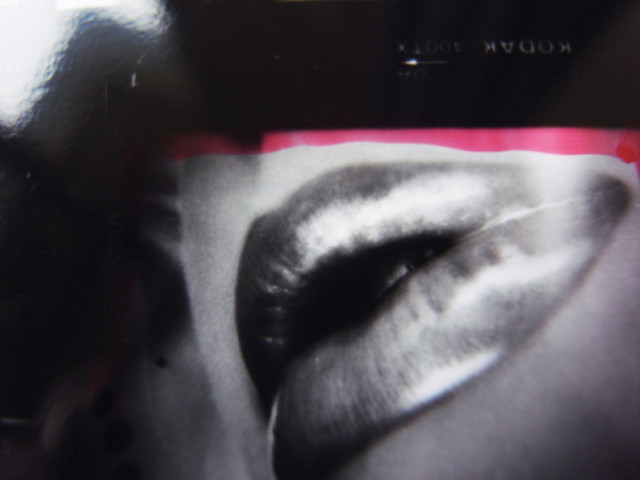
Wedged behind the neon towers of Shinjuku, Tokyo’s most infamous entertainment district, is a network of ramshackle lanes with shoebox-size bars packed two or three storeys high, a relic of prewar Tokyo that has somehow survived the city’s relentless redevelopment.
This is Golden Gai, where during the creative and political turmoil of the Sixties, artists, writers and photographers rubbed shoulders with gangsters and nightclub entertainers.
Entering one of the dimly lit dives, I squeeze past the bombed-out regulars, heading for a tiny wooden staircase at the back. While the area has become something of a tourist sight in recent years, my guidebook recommends against entering these establishments: either you will feel unwelcome as an outsider or you will be fleeced.
In this instance, however, I am with Daido Moriyama, the photographer who chronicled the area’s low life in the Sixties and Seventies, in images that changed the face of Japanese photography and are increasingly recognised as an influence worldwide.
Moriyama has been frequenting this bar for nearly 50 years. The walls are plastered with posters for his exhibitions, with images that reflect the area in its heyday, and have been responsible in large part for its notorious reputation.
Coming to Golden Gai with Moriyama is like going to the Moulin Rouge with Toulouse-Lautrec. A shy but drily humorous 74-year-old in a Harley Davidson T-shirt, Moriyama settles himself in a window seat, occasionally glancing down to wave to acquaintances passing in the lane below.
“This area was really hot when I first came here,” he says. “You’d have actors in one bar, writers in another, photographers in another. Everyone came here to drink and shout and fight. The yakuza [gangsters] drank in a room upstairs, there was a hole in the roof so they could make a quick getaway.”
Moriyama’s images of Shinjuku feature prominently in a major new exhibition at Tate Modern, which looks at the phenomenon of the city through the eyes of two photographers: the American William Klein, whose raw, grainy imagery defined the genre of street photography in the Fifties, and Moriyama, who is very much less well known in the United Kingdom, but likely to be the real discovery of the exhibition.
It charts Moriyama’s development as a young street photographer, initially heavily influenced by Klein, as he took to the road in Japan, deconstructing both his country and the medium of photography itself, before eventually setting out to “destroy photography” altogether.
While the experimentalism of the Sixties Shinjuku scene was bound up with left-wing opposition to the commercialisation and Americanisation of Japan, Moriyama’s images are notable for their dispassionate, morally ambiguous tone.
“I think by nature I’m almost biologically apolitical,” he says. “For me photographs are taken in the eye before you’ve even thought what they mean. That’s the reality I’m interested in capturing.”
Japan has a rich and distinctive photographic tradition, dating back to the mid-19th century, before the opening up of Japan to the outside world in the 1860s.
Yet Moriyama fell into the profession almost by accident. Born in Osaka, Japan’s second city, in 1938, the son of an insurance salesman, he moved frequently with his father’s work, and never had a clear sense of personal roots — an idea that has informed much of his work.
Talented as an artist, he trained in graphic design and ran his own studio with some success, until one day he went to pick up an image from a photographer’s studio. “I was really struck by the atmosphere. Design was desk-bound, but this felt active ... groovy. I wasn’t interested in taking pictures, I just liked the feel of the photographic world.”
Moving to Tokyo, he worked as assistant to various notable photographers, coming under the influence of the great photojournalist Shomei Tomatsu — whose work can be seen in the present exhibition “Everything Was Moving” at the Barbican gallery in London.
Where Tomatsu and his peers were profoundly troubled by the legacy of the war, by the American occupation and what they saw as the destruction of traditional Japanese culture, Moriyama’s generation, a decade younger, had a far easier relationship with the influence of the West.
“We found the mixture of the Japanese and the Western already there. We just accepted it. There was an American air force base near where I grew up. The Korean War was on. I saw the planes going in and out, the American airmen in the bars with beautiful Japanese girls. It felt exciting.”
William Klein’s book “Life is Good and Good For You in New York”, with its visceral sense of the Big Apple’s pavement life, was critical in inducing Moriyama to take pictures himself. “It really shocked me with the power of photography. It was as simple as that. It was only when I got out on the street with a camera myself that I started to think about how he’d done it.”
Moriyama’s first book, “Japan, a Photo Theater”, established his signature style in a decidedly seamy portrait of Tokyo, concentrating on the actors and nightclub performers of its entertainment districts.
His use of heavy grain and saturated blacks gave the images enormous impact on the page. For Moriyama, the photo-book isn’t simply a retrospective collection of images, but a work of art in its own right which he designs in his head even as he is taking the pictures.
Influenced by Jack Kerouac’s Beat classic “On the Road”, he began travelling along Japan’s principal highways, recording his progress in photo-essays in which the journey — as in Kerouac’s book — was as important as the destination.
“In ‘On the Road’ each phrase is like one shot,” he says. “The narrative is always moving, always looking at different things at the same time.” The resulting images pushed Moriyama’s aesthetic ever further towards abstraction, looking through windscreens on to rain-swept roads, at deserted car parks and battered hotels. They conveyed a raw, almost brutalised Japan in which the human figure dissolves into blackness and blur.
“For me, capturing what I feel with my body is more important than the technicalities of photography. If the image is shaking, it’s OK, if it’s out of focus, it’s OK. Clarity isn’t what photography is about.”
And if these images can appear almost random, Moriyama has a knack of imbuing them with a sense of tension and unease. “It may look like I’m just pointing the camera at what’s in front of me. But I’m trying to photograph what people see, but don’t notice — something that’s mysterious and unknown in everyday life.”
In the late Sixties, when political unrest was at its height, Moriyama became drawn, almost against his will, into the Provoke group, a small association of left-wing photographers who wanted to redefine their medium in the light of new social and political realities.
“Japan was moving fast,” says Moriyama, “and we wanted to reflect that in our work.” This approach reached its limit in his 1972 book “Farewell Photography”, in which he set out to “destroy photography”, giving his publisher a mass of damaged negatives and asking him to print them up anyway that suited him.
“At that time I was frustrated with everything, including photography — particularly my own. There was a sense of irritation generally in the air, so I just thought ‘let’s completely deconstruct photography’.”
The result was a beautiful, but indecipherable mass of blurred and marked images, a pyrrhic avant-garde gesture that was typical of the time — reminiscent of Jean-Luc Godard’s attempts to “destroy cinema”. While it is now regarded as a classic, for Moriyama it was ultimately unsatisfying.
“The book was incomprehensible to everyone, which was what I intended. But I found that having said farewell to photography, I had nothing to do. So after about a year I started working again, but in a completely different way. I started photographing things that are in the DNA of Japan: cherry blossoms, and the most beautiful views of Japan as you’d see them in postcards — only I made these images really dark.”
Since then Moriyama’s photography has taken a more classic turn, in sumptuous essays in light and dark, and surreal and often subtly sensual studies in form — such as the images of legs in fishnet tights recently shown at the Michael Hoppen Gallery in London — all of which feel very much in line with the preoccupations of mainstream Modernist photography.
Yet if Moriyama cites his principal influences as Klein, Kerouac and Andy Warhol — and you can flick through his books for pages at a time, barely realising they have anything to do with Japan — there is something profoundly Japanese about his vision.
His tendency towards abstraction, the way he pushes composition and grain in his images, almost in spite of the ostensible subject, recalls traditional forms as diverse as calligraphy and woodblock prints.
“There is something very vernacular, something I can feel and smell as Japanese in what I do. So if at first glance the pictures might look quite American, there’s a belief in Japanese tradition that comes out in them even if I’m not always conscious of it.”
Moriyama seems temperamentally very much a loner. When we move to another bar, this one frequented by the theatre crowd, every inch of its walls and ceiling smothered by photographs, posters and album covers, a group of artists and gallerists arrive and a mini party ensues. But Moriyama remains out on a limb, seated at the far end of the bar immersed in his own thoughts.
He still photographs prodigiously, though now often digitally and in colour, re-examining and recycling his old negatives, and creating a continual stream of books and other publications. And while he has made acclaimed studies of New York and other parts of Japan, his lens continually returns to Shinjuku, the area where he started.
What is it about it that he finds so compelling? “I’ve never been attracted to places that are very hygienic,” he says, almost apologetically. “I like a touch of squalor.”
–The Telegraph Group Limited, London 2012
William Klein + Daido Moriyama is at Tate Modern, London until January 20, 2013.





